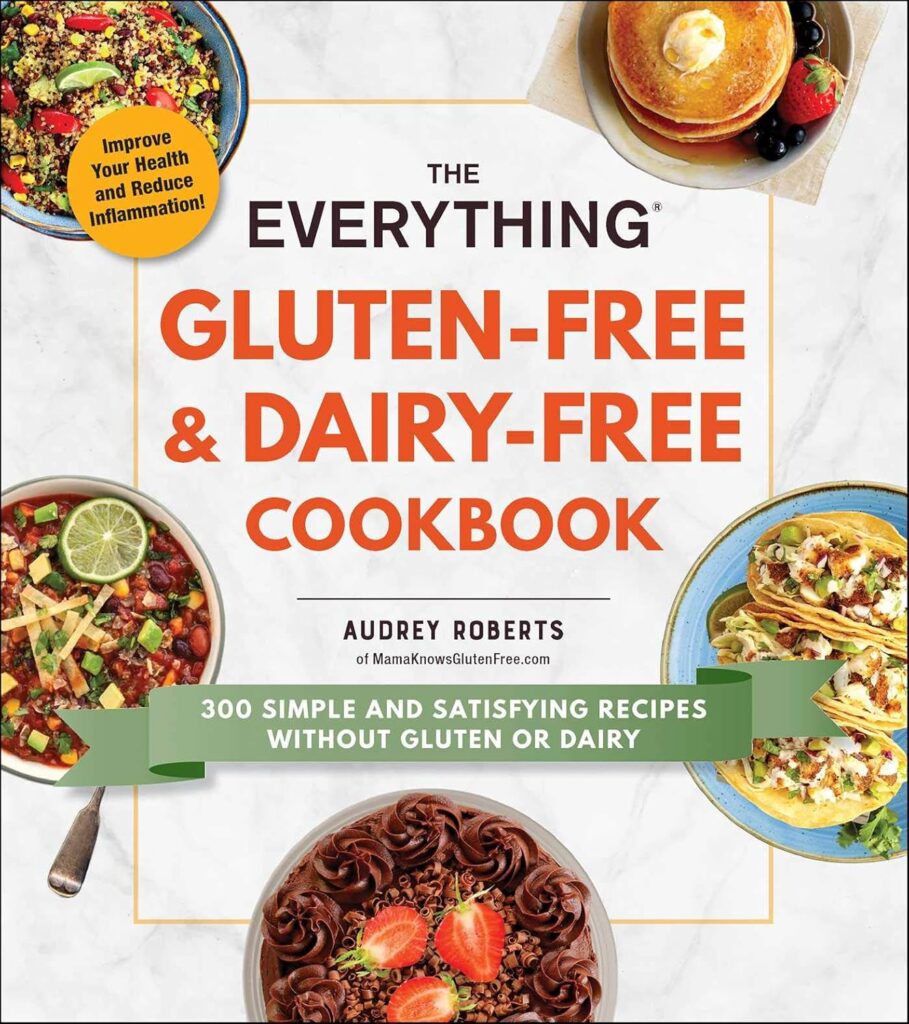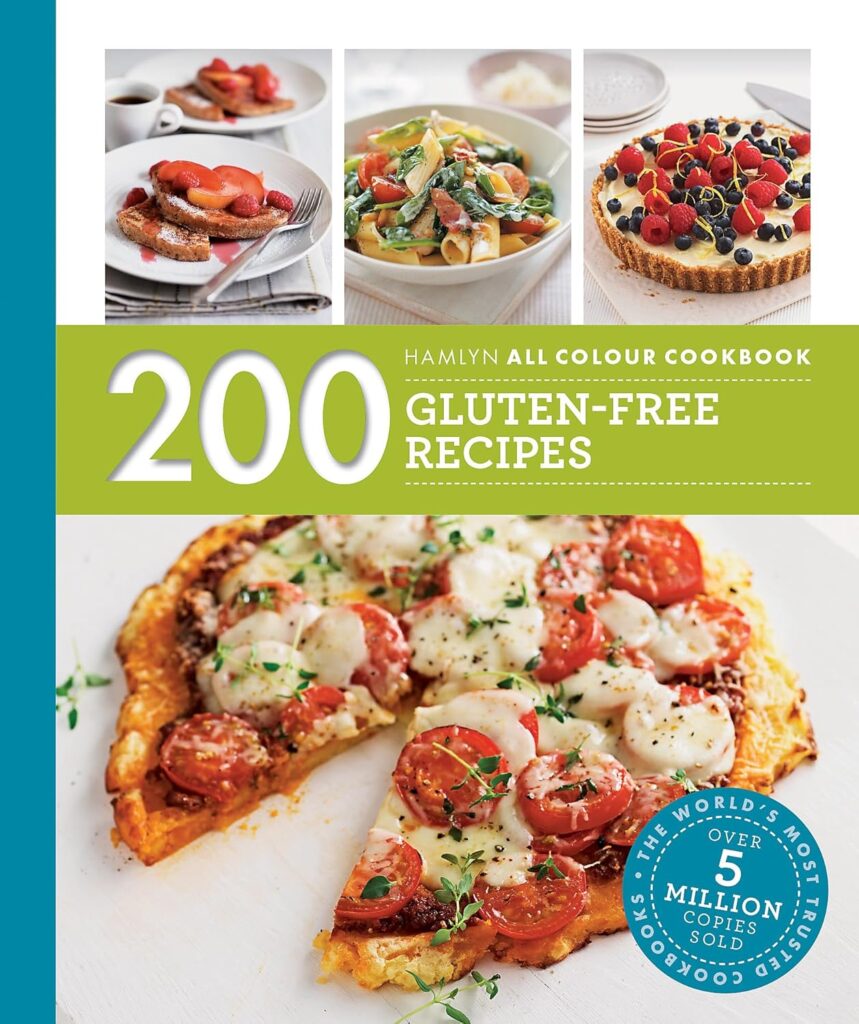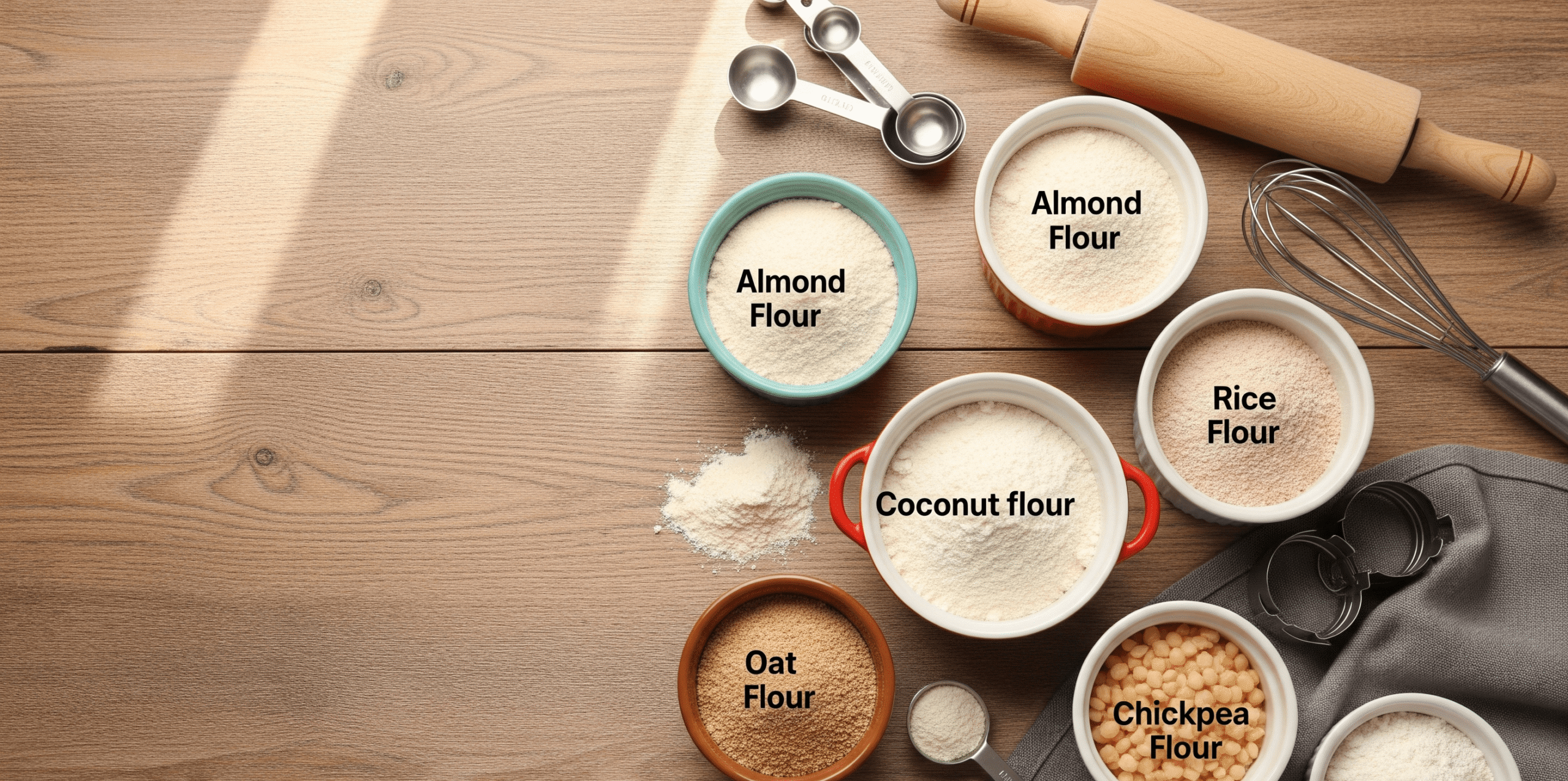Best Gluten-Free Flours for Baking: A Beginner’s Complete Guide
Introduction: Join the Gluten-Free Baking Revolution
You might be gluten-intolerant, celiac, or simply looking to live a healthier lifestyle, baking using anything other than traditional wheat flour doesn’t have to mean compromising on flavor or texture. In fact, with the best alternatives, gluten-free baking can be more delicious & varied. This guide will take you through the best gluten-free flours for baking, from choosing the ideal flour for cookies, cakes & bread to everything in between. From nutty to neutral, heavy to light there’s a gluten-free flour for every desire. Let’s get into the best ones that’ll take your baking up a notch & keep your gut smiling. You can check out more articles at GlutenfreeDietBook.
What Makes a Great Gluten-Free Flour?
Before we get to the list, here’s what you need to know: Gluten-free flours aren’t like all-purpose wheat flour. They don’t have the natural elasticity of gluten, so most recipes need a combination of flours or added binders such as xanthan gum or eggs.

Things to Think About:
- Texture: Fine or coarse? The grind can be a make-or-break for your baked goods.
- Flavor: Certain flours bring a nutty or earthy flavor, while others are neutral.
- Nutrition: Most gluten-free flours include added health benefits more fiber, protein, or healthy fats.
Top 8 Best Gluten-Free Flours for Baking
Here’s a newcomer’s guide to the best gluten-free flours for baking you should get to know:
| Flour Name | Flavor Profile | Best For | Bonus Benefits |
|---|---|---|---|
| Almond Flour | Nutty, lightly sweet | Cookies, cakes, muffins | Protein & healthy fat-rich |
| Coconut Flour | Sweet, dry | Pancakes, muffins, brownies | Fiber-rich, low carb |
| Rice Flour (White/Brown) | Neutral, slightly gritty | Breads, cakes, thickening | Easy to digest |
| Oat Flour | Mild, earthy | Cookies, muffins, breads | Rich in fiber |
| Sorghum Flour | Mild, wheat-like | Flatbreads, pancakes | Antioxidant-rich |
| Chickpea (Besan) Flour | Earthy, nutty | Savory baking, crackers | Protein-packed |
| Tapioca Flour | Neutral, starchy | Thickening, chewy texture | Adds lightness to blends |
| Buckwheat Flour | Bold, earthy | Pancakes, waffles, breads | Gluten-free despite the name |
1. Almond Flour: The Nutty Favorite
Almond flour is among the finest gluten-free flours available for baking if you’re looking for moisture, richness & an extra dose of nutrition. Blanched almonds ground to a fine powder, it’s ideal for keto & paleo diets.
Best For: Soft cookies, banana bread, & moist cakes.
Pro Tip: Since it’s high in fat, cut down on added oils in your recipe to prevent greasiness.
You may also like:-
Gluten-Free Snacks to Prepare at Home: 5 Simple Recipes That Everyone Will Enjoy
How to Test for Gluten Intolerance at Home: Cheap, Chill, and Actually Doable
2. Coconut Flour: Fiber-Packed & Flavorful
Coconut flour is highly absorbent you’ll often need less of it than other flours & more liquid in your recipes. It imparts a subtle sweetness & pairs beautifully with tropical or chocolatey flavors.
Best For: Muffins, brownies, low-carb treats.
Watch Out: Always sift it to prevent clumping & use eggs or flax to improve structure.
3. Rice Flour: The Staple for Every Pantry
Inexpensive, easy to access, & simple to use, white or brown rice flour is a standard ingredient in gluten-free flour mixes. Though it may be a bit gritty in single-ingredient form, it plays nicely in flour mixtures.
Best Used In: Delicate cakes, crusts, & thickening sauces.
Fast Hack: Mix with starches such as tapioca to achieve fluffier end products.
4. Oat Flour: Soft & Nutritious
Made from finely milled oats, oat flour provides a tender texture & subtle flavor to your baked goods. It’s also ridiculously simple to make at home by blending gluten-free oats.
Best For: Cookies, quick breads, & muffins.
Pro Tip: Ensure your oats are certified gluten-free, as cross-contamination is prevalent.
5. Sorghum Flour: The Underestimated Hero
With a light, wheaty taste, sorghum flour provides texture & a satisfying chew to your baked products. It is suitable for blends when making bread or pancakes.
Best For: Pancakes, sandwich loaves, flatbreads.
Bonus: It’s high in fiber & antioxidants.
6. Chickpea (Besan) Flour: Savory Superstar
If you’re looking for something more savory or hearty, chickpea flour is your go-to. Common in Indian & Middle Eastern cooking, it works best in crackers, fritters, & dense baked goods.
Best For: Crackers, pizza crusts, veggie burgers.
Flavor Note: It has a bold, earthy taste better when lightly toasted.
7. Tapioca Flour: The Texture Booster
Also called tapioca starch, this is your go-to secret ingredient for chewy, elastic textures. It doesn’t contribute much in the way of flavor or nutrition, but it’s great with other flours.
Best For: Chewy cookies, Brazilian cheese bread, pizza crusts.
Heads Up: Don’t get it confused with cassava flour, which is processed from the whole root.
8. Buckwheat Flour: Don’t Judge by the Name
Despite its misleading name, buckwheat is 100% gluten-free. It’s bold in flavor some say “nutty,” others say “earthy” & it works great in rustic recipes.
Best For: Waffles, pancakes & artisan-style bread.
Flavor Tip: Blend with lighter flours for balance if you find it too strong.
You may also like following articles:-
Gluten Free Sourdough Pretzels: Simple Baking Guide for Beginners
Gluten-Free Garlic Bread Recipe: Simple Homemade Garlic Bread Without Gluten
Gluten-Free Almond Flour Pizza Crust: Easy Recipe for Tasty Homemade Pizza
How to Blend Gluten-Free Flours Like a Pro
Most gluten-free recipes use a blend to mimic the structure of wheat flour. Here’s a basic formula to get you started:
Basic DIY Gluten-Free Flour Blend:
- 1 cup rice flour
- ½ cup tapioca flour
- ½ cup sorghum flour
- Optional: 1 tsp xanthan gum (for stretchiness)
This foundation can be substituted cup-for-cup in most baking. Modify it based on your texture & taste preferences!
The Most Frequently Asked Questions on Gluten-Free Baking
Q: Can I replace one gluten-free flour with another?
A: Not necessarily. Some are very absorbent (such as coconut), & some are light (such as oat). Try using tried blends or using recipes that have been created with particular flours in mind.
Q: Which is the best gluten-free flour to bake bread with?
A: Sorghum & oat flour are good in mixes. Use tapioca for extensibility & xanthan gum for binding.
Q: Are all gluten-free flours nutritious?
A: Not always. Some are heavy in starch with minimal nutrients. Mixing protein and fiber-containing flours (such as almond or chickpea) helps.

Conclusion:
There is a world beyond wheat out there just waiting for you in the kitchen. Whether you’re making decadent chocolate brownies or crusty sandwich loaves, selecting the top gluten-free flours for baking is the starting point to gluten-free excellence. And remember, experimenting is half the fun so go ahead & match, mix, & taste your way to success. Having a little know-how (and this guide), you’re already off to a great start.
Also read – Is Sourdough Bread Gluten-Free? Myths, Facts, and Expert Opinions

